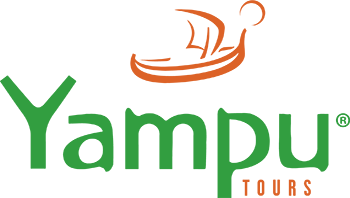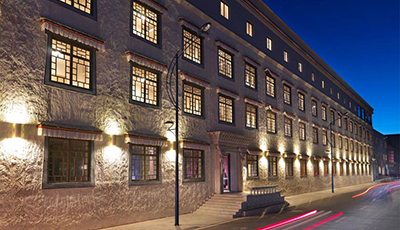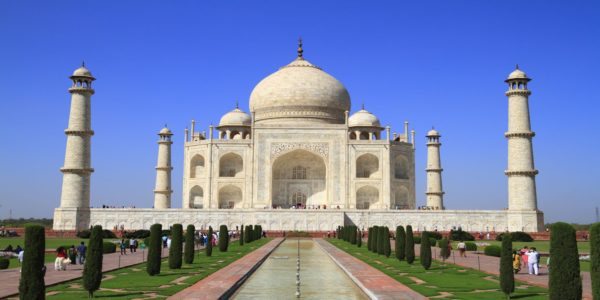Private Tour Highlights
- Tour the religious center of Tibetan Buddhism and former residence of the Dalai Lama
- Visit Norbulinka, the summer palace of His Holiness Dalai Lama
- Walk the oldest and the most revered religious structure in Tibet, Jokhang Temple
- Join pilgrims in their worshipping around the temple
- Witness the Sera Monastery, one of the three great monasteries of Tibet
- Admire the Kumbum Stupa, one of the most revered and unusual architectural masterpieces
- Be shocked with the utter beauty of the Tibetan Plateau
- The perfect combination of Tibet’s most significant cities and the spectacular countryside in between
- Customizable to fit individual travel dates and any specific requests
- And so much more!
Tour Overview
Looking for a Tibetan Buddhism Intro? Yampu’s tour combining some of Tibet’s most significant cities and the spectacular countryside in between, will shock you with the utter beauty of the Tibetan Plateau and leave you in amazement with the region’s rich heritage that has accumulated over thousands of years. Find yourself humbled by the magnitude and elegance of the mighty Potala Palace, picnic along the turquoise waters of Yamdrok Yumsto Lake and visit some of Buddhism’s most noteworthy monasteries in this mystifying land.
Differing from the inland cities and other places in Tibet, Lhasa is unique with an allure all of its own. In the Tibetan language, Lhasa means the Holy Land or the Buddha Land. It is the center of Tibet’s politics, economy and culture. The city has also been appointed as one of the 24 historical and cultural cities of China. The splendor and grandeur of the Potala Palace in Lhasa remains a world-famous symbol of the enigmatic power of politics and religion in this region.
Tibet’s second largest city Shigatse, literally meaning the “fertile land” in the Tibetan language. Shigatse is also the residence place of the Panchen Lama, the reincarnation of the Buddha of Infinite Light, who ranks second to the Dalai Lama. As far back as the 14th century, Shigatse has acted as the political, economical and religious hub of southern Tibet.
Inclusions
Accommodation in twin share/double rooms with daily breakfasts, Tours, transfers and entry fees on private basis in air-conditioned vehicle, Service of English speaking local guides, Tibet Travel Permit, Bottled water provided on transfers and sightseeing, Airfare is not included in the price
Notes:
* Due to restrictive permit requirements, a minimum of 2 travelers of the same nationality (passports issued by the same country) is necessary for tours to operate in Tibet. Single travelers are not eligible for a Tibet permit at this time.
* Significant discounts may be available during the winter and spring months. Please check with your Yampu Travel Consultant for additional details.
* Tibet remains cool in the summer and extremely cold in the winter. The best time to visit is from April to November, avoiding the cold weather from December to March.
* Nearly every visitor to Tibet feels the effects of the high altitude, as it lies over 3000 meters (9842 feet) and rises above 5000 meters (16404 feet) in many areas. It is suggested to acclimatize to the high altitude by taking it easy for at least the first 24 hours upon arrival, avoiding any strenuous activity, and paying attention to your health.
Trip Type:
All our trips are operated on a private basis unless specified otherwise. This is only a sample itinerary; your Yampu Tour Consultant will personalize this trip for you according to your available dates, interests and type of hotels. This is your trip and we will work on making it perfect!
Tour Itinerary
Arrival in Lhasa
Upon arrival in Lhasa, airport reception and transfer to the hotel. On the way to Lhasa, enjoy spectacular scenery and typical Tibetan villages. Spend the remainder of the day at leisure acclimatizing to the high altitude.
Upon arrival in Lhasa, airport reception and transfer to the hotel. On the way to Lhasa, enjoy spectacular scenery and typical Tibetan villages. Spend the remainder of the day at leisure acclimatizing to the high altitude.
Lhasa City Tour
Begin read more...
Begin the day with a morning tour to the splendid Potala Palace (1 hour visit). The Potala Palace is the religious center of Tibetan Buddhism and the former residence of the Dalai Lama. The giant structure looks like an ancient fortress. It was originally built in 637AD by Emperor Songtsen Gampo to greet his new bride, who was coming from China. Construction of the current structure began during the reign of the fifth Dalai Lama. In 1645, the White Palace was completed and the Red Palace, was completed in 1694. The palace remained virtually unchanged until 1922 when the 13th Dalai Lama renovated many chapels and assembly halls and added two stories to the Red Palace.
Next, visit Norbulinka, the summer palace of His Holiness Dalai Lama. The 8th Dalai Lama designated it as a summer retreat but the majority of the buildings were not erected until the reigns of 13th and 14th Dalai Lamas. Every year as the chill air warmed, the Dalai Lama would leave Potala in a grand procession for six months residence in the Norbulingkha. It is worth a visit and the park is a great place to be at festival times and public Holidays. During the seventh Lunar month of every year the Norbulingkha is crowded with picnickers for the Shotun festival.
In the afternoon, visit the oldest and the most revered religious structure in Tibet, Jokhang Temple. It dates back to 639 to 647, construction initiated by King Songsten Gampo to house a Buddha image Akshobhya brought to Tibet by his Nepalese wife. But now, the main statue in this temple is of the Sakyamuni, which was a gift from his Chinese wife Won Cheng in 641 A.D to King Songsten Gampo. The statue of Akshobhya has been switched to Romoche. Pilgrims from all over Tibet come to worship here and prostrate themselves in full length in front of the main doors of the temple. It is truly a moving and unrivaled experience to witness such a sight and more so to actually join them in their pilgrimage around the temple.
Finish the first day in Lhasa at Barkhor Market. The word Barkhor refers to the middle of the three concentric holy circuits around the Jokhang. The Barkhor Circuit runs through the heart of the old city where life has changed little down the centuries and it gives a curious sensation of having slipped through time into a medieval carnival. It is an area unrivalled in Tibet for its fascinating combination of deep religiosity and pushes – and – shoves market economics. This is both the spiritual heart of the holy city and the main commercial districts being the center of Tibetan capital's trade for centuries.
...read less
Day of Monasteries
Morning read more...
Morning visit to the Sera Monastery. 5km (3 miles) north of Lhasa, its setting is one of the prettiest in Lhasa, hugging the ridge that forms the Northern wall of the Kyi Chu Valley. Founded in 1419 by Sakya Yeshe (a disciple of Tsongkhapa, belonging to the Gelugpa sect), it is one of the three great monasteries of Tibet, the other two being Drepung & Ganden. In its heyday, Sera hosted a huge monastic population and five colleges. Like Drepung, the colleges in Sera specialized in Sera Me (fundamental precepts of Buddhism), Sera Je (instruction of itinerant monks) and Sera Ngagpa (Tantric studies).
About 8km (5 miles) to the west of central Lhasa lies Drepung Monastery, one of the world’s largest. It was built in 1416 by Jamyang Choje, a pupil of Tshong Khapa (the founder of the Gelugpa sect). Drepung literally means “heaps of rice” and the fertility of its fields supported a monastic community that, before 1959, ranked as Tibet’s largest with 7,770 monks. For over 500 years Drepung served as the major pillar of the theocratic state, serving as the main political headquarters for the Gelugpa sect of Tibetan Buddhism. It also served as the residence of the Dalai Lamas until the Potala Palace was constructed in 1645. Suffering only minor damage during the Cultural Revolution, Drepung is full of historical relics, Buddhist scriptures and art.
...read less
Yamdrok Lake- Gyantse
Morning read more...
Morning drive to Gyantse, visiting Yamdrok Lake en route. Yamdrok Lake is one of the three largest lakes of Tibet. It is within Langkamu County, with an area of 638 square kilometers (246 sq miles) and a coast line of 250 kilometers (155 miles). Yamdrok Lake is one of the three largest sacred lakes in Tibet. The lake is surrounded by many snow-capped mountains and is fed by numerous small streams.
Continue on to Gyantse, one of the least Chinese influenced towns in Tibet. Upon arrival, tour of Gyantse before checking into the hotel.
...read less
Gyantse - Shigatse
Morning read more...
Morning visit to the Kumbum Stupa and Palkhor Monastery en route to Shigatse. The Kumbum Stupa is one of the most revered and unusual architectural masterpieces. It was built in 1440 and is in the shape of a 108-sided mandala. Kumbum means 10,000 images. The Stupa rises over four symmetrical floors and is surmounted by a gold dome. The dome rises like a crown over four sets of eyes that gazes serenely out in the cardinal directions of the compass.
Palkhor Monastery is a kind of typical Tibetan Buddhism monastery architecture that has combined stupas and temples. The stupas and temples remain harmonious and bring out the best in each other. Its architecture fully represents a typical style of monasteries from the thirteenth to fifteenth centuries. The Palkhor Monastery (meaning lucky and happy monastery) has a Chinese name Baiju Monastery. There are three classes of Buddhism (Sakys, Gedang and Gelugpa) existing harmoniously this monastery. Finally, check into the hotel.
...read less
Tashilumpo Monastery
Visit read more...
Visit the Pachen Lama's palace at the great Tashilumpo Monastery. The Tashilhunpo Monastery is one of the Six Big Monasteries of Gelugpa (or Yellow Hat Sect) in Tibet. Also called the Heap of Glory, the monastery is located at the foot of Drolmari (Tara's Mountain), Shigatse. Founded by the First Dailai Lama in 1447, the monastery's structure was expanded by the Fourth and successive Panchen Lamas. Tashilhunpo Monastery covers an area of nearly 300,000 square meters (3,229,279 sq. ft.). The main structures found in the Tashilhunpo Monastery are the Maitreya Chapel, the Panchen Lama's Palace and the Kelsang Temple. Tashilhunpo is the seat of the Panchen Lama since the Fourth Panchen Lama took charge in the monastery, and there are now nearly 800 lamas.
Afterwards, transfer back to Lhasa and check in to the hotel for the night.
...read less
Flight Home
Transfer to the airport to move onward with travel arrangements or continue with the add-on of choice.
Transfer to the airport to move onward with travel arrangements or continue with the add-on of choice.
Places You'll See
-
Lhasa
“The Place of the Gods” has been the center of the Tibetan Buddhist world for over a millennium. Witness the massive Potala Palace soaring above the clouds of this holy city while Tibetans engage on a kora around the Jokhang Temple.
-
Gyantse
Gyantse, the fourth largest city in Tibet, is a city rich in culture and History. Once a major trade center, Gyanste is home to the Gyantse Dzong and the Pelkor Choede. While visiting Tibet be sure to sample the Famous Yak products, from yogurt to butter!
-
Shigatse
The second largest city in Tibet is the marvelous city of Shigatse. A religious atmosphere is set with the surrounding monasteries and mountainous views. Within the large area of Shigatse is the world’s tallest peak, Mount Everest.’Qomolangma’ which means ‘the peak of goddess’ attracts travelers and climbers from all over the world every year.
Hotel Options
Testimonials
Jim, Travel Agent
Traveled July, 2016
An incredible time……
WOW!!!…..
Just had Evelyn on the phone for over an hour and they had an incredible time……
“Very impressed with China and learned a lot! We loved our experience in Tibet. The people are lovely and scenery magnificent. We had very accommodating and thoughtful guides. Very helpful.”
Flights in China were great and no delays, hotels were awesome, guides were wonderful, tours were perfect and even the train worked out. The 8th person on the train was a young Tibetan woman and they felt safe with her in the compartment.
Once again, a total success and very happy clients….
Traveled To







